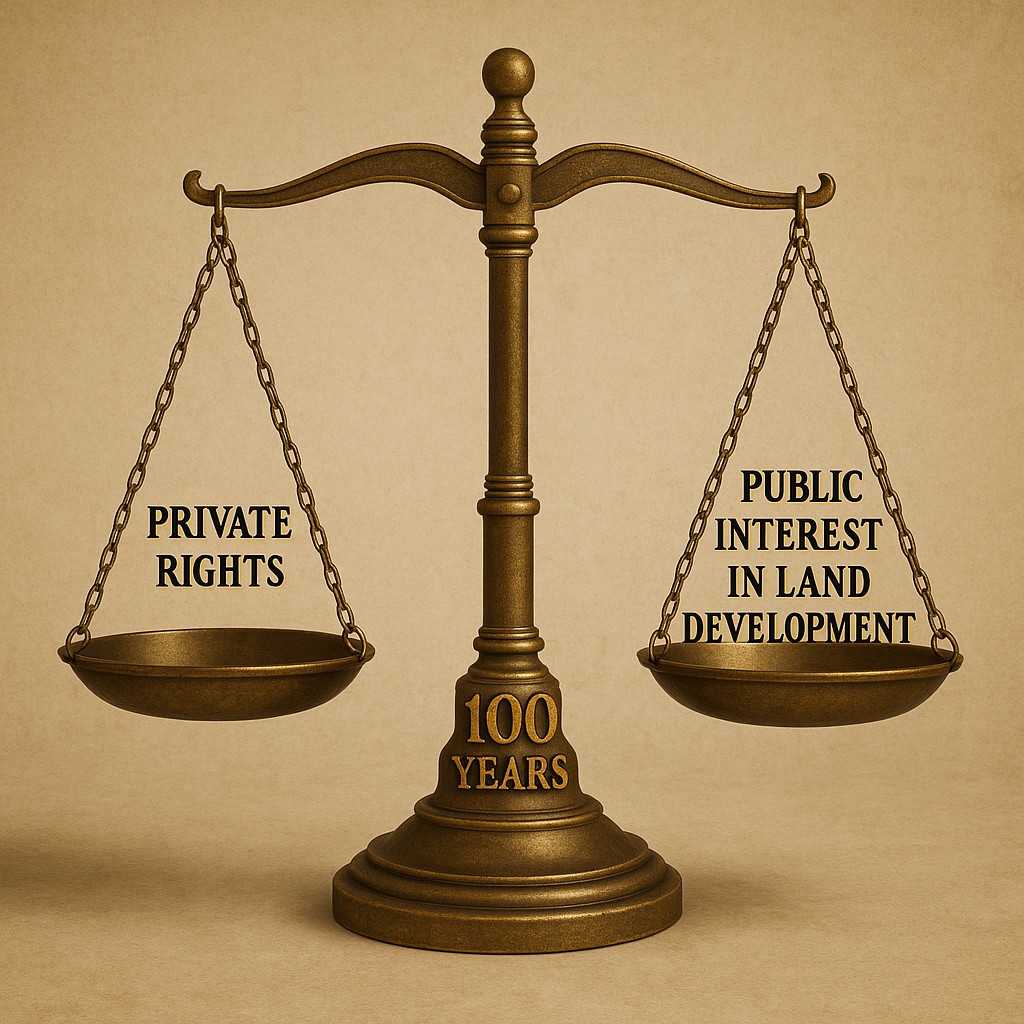Land & Development, Valuations
Modifying or Discharging Restrictive Covenants: A hundred years of balancing private rights vs the public interest

Restrictive covenants are long-standing features of English property law, often imposed to preserve the character or use of land. However, as land use evolves, many of these covenants become outdated or obstructive to modern development. Fortunately, there are legal mechanisms available to discharge or modify such covenants, the most common being under Section 84 of the Law of Property Act 1925.
Rather than being a later addition, Section 84 is as old as the act itself and so can proudly celebrate a hundred years of its intended purpose of balancing private property rights with the public interest in land development!
It has received its fair share of facelifts; and these minor adjustments alongside a constantly changing face of the country in terms of urban development, mean that it is currently more relevant than ever.
When Can a Restrictive Covenant Be Discharged?
An application to the Upper Tribunal (Lands Chamber) can lead to the discharge or modification of a covenant under specific conditions:
– Obsolescence: If the covenant has become obsolete due to changes in the character of the property or neighbourhood.
– Prevention of Reasonable Use: Where the covenant unreasonably impedes the landowner’s use, and offers no practical benefits of substantial value to the beneficiary.
– Agreement or Non-Injury: If the beneficiary agrees, or if the discharge causes them no injury.
A landmark example is Graham v Easington District Council (2009), where planning permission was granted for residential development on land restricted to coach depot use. The tribunal found the covenant to impede reasonable use and awarded limited compensation based on loss of value at the time of covenant imposition—not the full development uplift—reinforcing the idea that speculative compensation claims are unlikely to succeed.
Case Law Caution
Recent judgments reinforce a key message: developers must not cynically breach covenants in anticipation of discharge. In Alexander Devine v Housing Solutions Ltd (2020), the Supreme Court refused to discharge a covenant after social housing was built in breach, despite the public benefit, due to the developer’s conscious decision to disregard the restriction.
Similarly, in Fosse Urban Projects v Whyte (2023), covenants preventing building were upheld even though a house had already been constructed in breach.
Compensation Considerations
If a covenant is discharged, compensation may be payable. However, it is typically based on actual loss suffered by the beneficiary—not a share of development profits. For example, in Stockport BC v Alwiyah, the loss from losing rural views resulted in just £2,250 in damages, despite 42 houses being built.
Key Takeaways for Developers and Landowners
– Don’t rely on discharge as a foregone conclusion—tribunals assess the reasonableness of use and the actual benefit retained by the covenant.
– Engage early with legal professionals and consider planning policy alignment—granting of planning permission may support your case but is not decisive.
– Avoid breaching covenants without consent—cynical breaches often backfire in tribunal or court.
– Assess compensation risk realistically—it will usually be based on loss in value, not development profit.
The Development and Valuation teams at Roger Hannah offer strategic and compensation advice in relation to restrictive covenants—from initial assessments through to advice to support successful discharge applications.
We are also actively involved in cases defending against the discharge or modification of restrictive covenants, where in some cases we have been able to demonstrate the covenant is not obsolete and still provides a lasting benefit in line with its original purpose. Contact us today to discuss how we can support your case.





